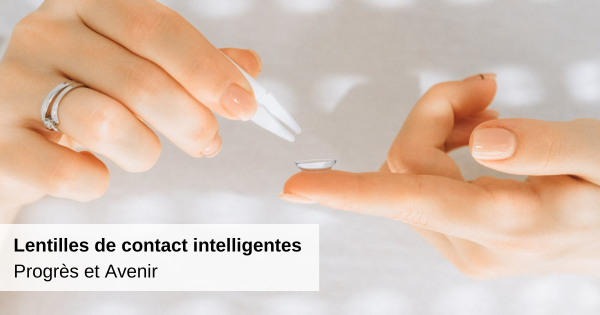Smart Contact Lenses: Progress and Future
Like glasses, contact lenses benefit from the many technological advances that characterize the world of optics. How can smart contact lenses revolutionize the industry? What will they bring to carriers? We take stock.
Technological advances at the heart of smart contact lens research
It has been some time since contact lenses were no longer intended to simply correct a visual defect. Several companies, including big names in global tech, have looked into the subject. Start-ups like Mojo Vision or research laboratories have also made it their hobbyhorse.
But what can smart contact lenses be used for? Above all, the very principle of lenses subjects companies to logistical and structural questions to which they must be able to answer. Thus, if the problem of recharging batteries on connected frames is relatively easy to solve, it appears almost insoluble when we want to equip lenses with a similar technology!
Des Researchers have begun to answer this question. In fact, a team of scientists has developed a flexible battery as thin as the cornea that could be recharged using…tears!
Contact lenses are already a technological gem. Making them “intelligent” will align them with the market for smart glasses, which, ultimately, could replace smartphones. Thus, we will be able to consult our emails, search for our itineraries… But the principle of lenses can also use these technologies to monitor the user's health data.
Thus, Google Lab announced on January 16, 2023, working on a blood sugar monitoring system via smart contact lenses. The latter would integrate miniaturized sensors and advanced technologies in order to monitor and collect data on eye health, blood sugar, but also intraocular pressure…
Make no mistake , smart contact lenses, like glasses, will have the primary goal of continuing to improve visual correction by dynamically adjusting the optical power of the lenses to meet the changing needs of the eye. It is especially in terms of personalization that the advances could prove to be major.

Applications and benefits for user experience
In order to transmit information and tracking more accurately and efficiently, smart lenses will need to be able to communicate with external devices such as mobile or non-mobile computers, thus transferring the collected data from the user .
An alert system could be set up to help anticipate certain diagnoses. Glaucoma or other eye diseases could thus be better managed thanks to reliable measurements that can easily be deciphered by the user themselves.
New features such as drug administration or augmented reality through lenses, would be in the research and development phase. Integrate augmented reality technologies into lenses for an overlay of visual information, offering potential applications in areas such as assisted navigation or medical augmented reality.
Of course, offering an optimal product to the market will prove to be long and costly. Other costs, risks and issues encompass research around smart contact lenses. However, they will, without a shadow of a doubt, be part of the future of the optical sector.
Sources: opticiensparconviction.fr federationdesdiabetiques.org mojo.vision



